How was Lake Tahoe formed? It is one of the most common questions I have heard while guiding throughout the Lake Tahoe Basin. This question deserves an answer with depth, humility, clarity, and clairvoyance, like the crystalline Tahoe waters that bound to over a thousand feet.
Article Overview
An Intro To ‘Stories of Stone’
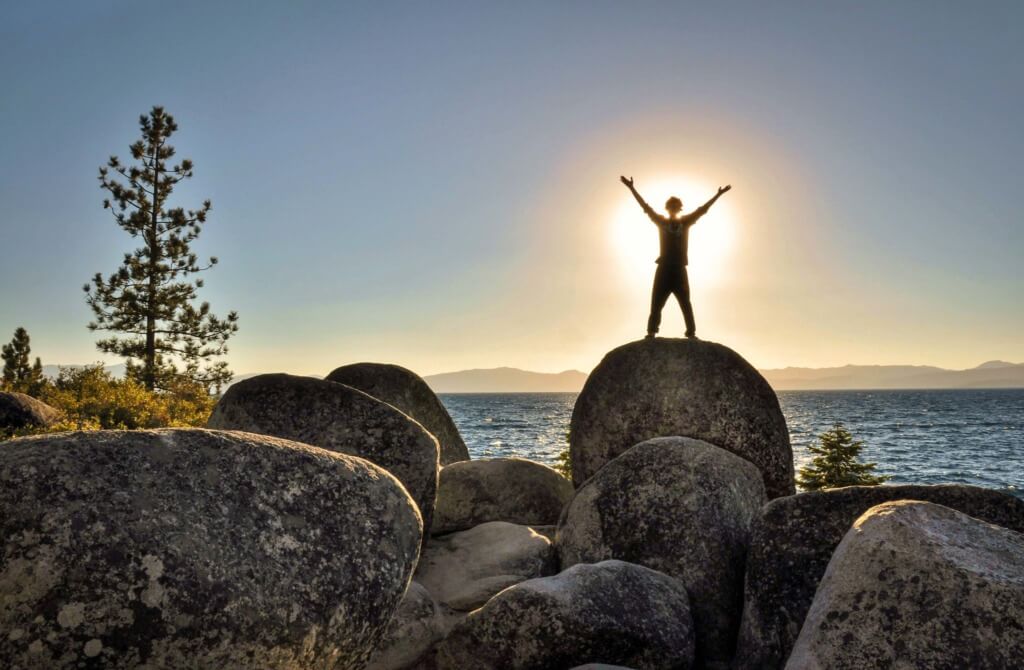
Enter the School of Stone, where that sharp-edged pebble in your shoe becomes a storyteller. And where that sizeable step among the tenth switchback on your long ascent transforms into a troubadour of stone with a story or maybe even a song to share. Consider this your invitation to step past an intellectual trailhead of the geologic formations of the Lake Tahoe area.
Each geologic story within this article is set no more than a day’s hike away. You are invited to see and touch the splendor of these stony storytellers for yourself. With descriptions of hikes and trails to enjoy a day out in the wilderness, where fresh air lifts upward as your feet pass over dirt and stone, and with an added geologic flavor, the stories that follow are forged in stone and carved in ice. But the path taken beyond the trailhead is up to you.
First things first, let us begin by noting that the geology that follows is no more than fancy storytelling. Not to take away from the plentitude of useful information that science brings, but a reminder that in the past thousand years much has changed in the name of science from what we consider factual, and that is especially true for geology.
Everything in this article, though a reflection of the current conclusions of the geologic community, I prefer to refer to as stories. They are stories of stone and land formation that compose a piece of an answer to that question regarding the forming of the Lake Tahoe area.
The Sierra Stone: Granite
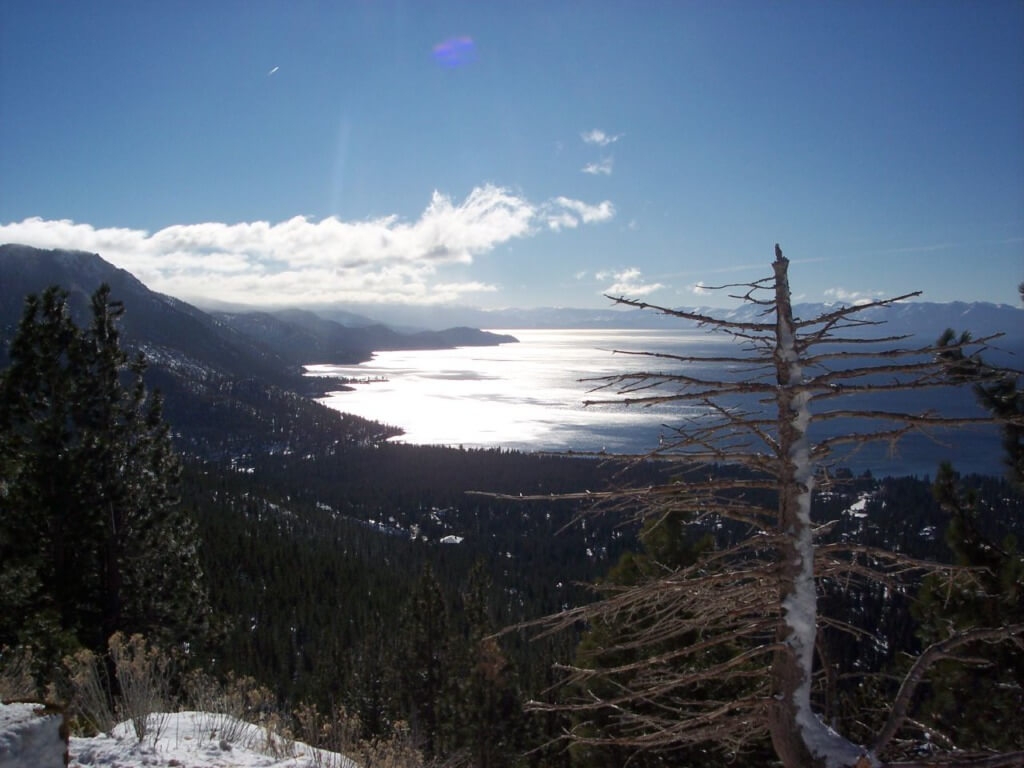
Instead of starting in the beginning, let’s start somewhere in the middle and work outward from there. Granite is a charismatic rock that composes the majority of the Sierra Nevada, including, of course, the Lake Tahoe area. Let us travel to the southwest of Lake Tahoe into the Desolation Wilderness, where the breathtaking natural beauty of complex crags and granite basins has earned it the right of a Wilderness area.
With an easily acquired permit for a day or overnight into Desolation Wilderness, let us embark. After luckily scoring a parking spot at the Bayview Trailhead, we gear up for a hike to the popular destination of Cascade Falls. At the trailhead, we take a left at the junction and make our way up Cascade Canyon.
Just above Cascade Lake, Cascade Falls is one of the most picturesque and accessible areas in Lake Tahoe. But why is Cascade Falls even there falling in the first place? Where the water of many of the surrounding canyons gradually finds its way down, Cascade Canyon ends in… you guessed it. A cascade! Why?
Into The Cretaceous And Back Again
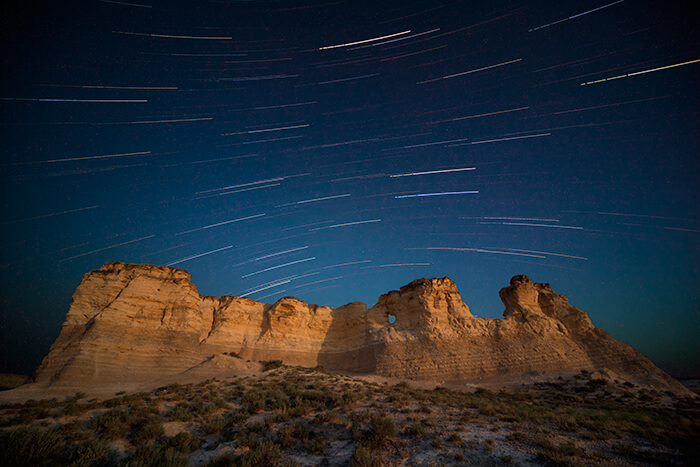
Grab a sip of that filtered meltwater and let’s go back 100 million years to the Cretaceous. Standing next to the torrent of Cascade falls in relation to the North American Continent, suddenly 140 million years in the past you would be on the slope of an ancient mountain range 10 or 15 thousand feet above a shallow sea dotted with a few islands.
Falling down to sea level, the water would likely be quite warm because at this point in time in the Cretaceous, what is now California was at the Equator and covered mostly by a shallow sea that abruptly rose to an ancient volcanic mountain range like that of today’s Andes. Going down even further beneath the water’s surface and rock bottom, to a depth of 20 kilometers, we find our granite, just starting to form.
Partially melted, this is our newborn granite. The toddler years are mostly spent slowly forming crystals with like minerals pursuing an affinity for one another. The pressure from the kilometers of material above keeps the cooling process for our juvenile granite slow, allowing for crystal formation. Quartz, feldspar, and biotite are some of the more common minerals in our granite, but even the crystals of these minerals take a long time to form.
Splash some icy meltwater on your face and look around. Here we are back in the good ol’ present time on location at Cascade Falls. Go ahead and pick up a small stone lying around near the waterfall and have a look. That salt and pepper color and large grain texture are those minerals that began forming way back 140 million years ago.
Feel the rough edge of this granite stone to find it is not easily breakable. Even though this granite is composed of many different minerals, the heat and pressure in their formation stuck all those crystals together like glue. The lighter grains may be quartz or feldspar and the darker may be biotite or hornblende. All minerals suspended in stone within your hand.
Rushing water runs over the granite formed ever so long ago, smoothing and carving in the most gentle and forceful way. Rendering a large boulder to sand and a rough surface to as smooth as porcelain. There is much granite in the Lake Tahoe Area but no waterfalls quite like Cascade Falls.
Why is it that some canyons of granite offer a gradual slope for water to descend while Cascade Canyon ends in substantial and beautiful fall? We must travel back to the deep Cretaceous forming granite where one story may offer a crystallizing light.
While our granite is now starting to cool after just a few short million years, the crystals within have begun to form and grow and some of the plasticity of our young granite has been rendered slightly more firm. Deeper down another granitic body has begun to stir.
This deeper, more melted and younger granite becomes restless, yearning for attention. Finding the cracks of our solidified granite already well along in its formation, the younger granite intrudes without invitation, filling the cracks of our solid granite.
As this younger granite intrudes, the crystals of our granite recrystallize in some places and the weak points and cracks are effectively galvanized, rendering the subsequent granite more resistant to whatever the world may throw at it. Traumatizing as this process may be for our still young granite, the result is a stronger, more resilient young rock.
A strong breeze picks up just rushing down the canyon as the sun lowers in the sky next to Cascade Falls. There, where the water has been rushing, slowly making its mark on the granite, carving and smoothing the stone, the water dives off of the hundred-foot drop over galvanized granite and into Cascade Lake.
Glacial Strokes
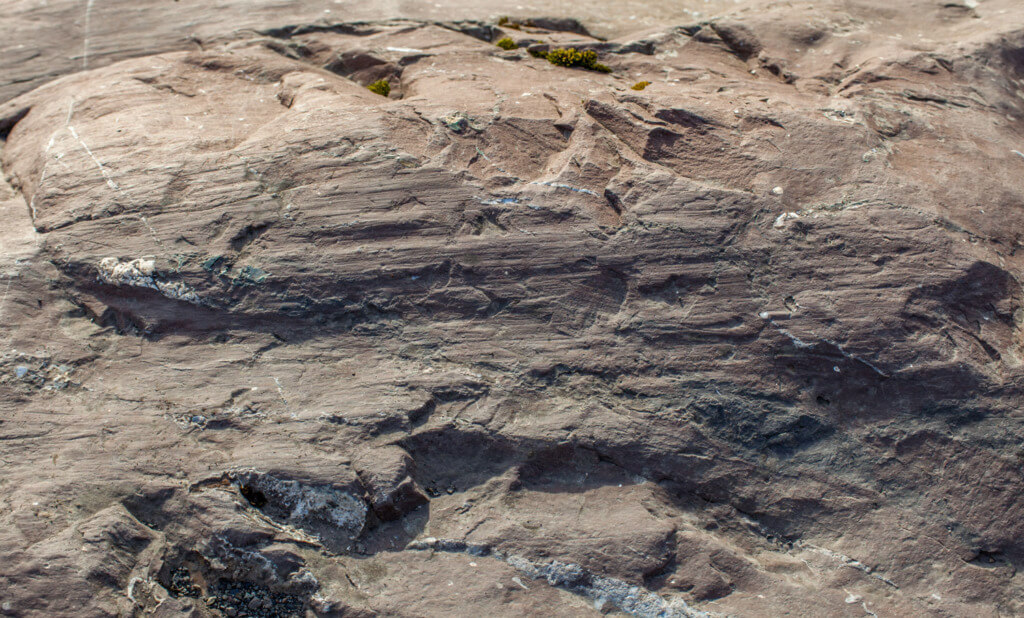
Another form of water has left its carvings in this canyon of Cascade. The frozen form, a glacier, has left its icy strokes upon the land by shaping canyons and marking the granite. As if smoothing out a grandiose channel for its liquid counterpart, the glaciers in Cascade Canyon have left evidence of their motility upon the stone.
The many glaciers that have passed through this area with a broad eroding stroke have left the wide U-shaped valley of Cascade. From across Lake Tahoe, if you’re standing on the east shore looking west towards Cascade Canyon, you can see the distinctive U-shape, a hint of a glacial past. Though it was around 14,000 years since the last wall of glacial ice was in Cascade Canyon, marks have been left by the icy canyon carver.
Take a few steps up from where the water eddies on the smoothed granite and you will likely find the markings left by passing glaciers. Where the granite smoothed by water has pockets from where the running water eddies, the glacier has smoothed the granite in a different way.
Look by your feet as you pass over the trail leading further up the glacial-cut canyon and you may spot distinct lines in the rock that lay parallel to the direction of glacial flow. These lines are known as glacial striations and can be found throughout the Tahoe area wherever glaciers once graced rock with their touch.
Angulated by the crystalline composition, any fresh face of granite is touchably rough, though the granite touched by glaciers is noticeably smoother and often contains these distinct scratches. Bring your eye back 18 thousand years on the granite floor of Cascade Canyon, then speed up the time-lapse and you will see a glacier moving down this canyon, picking up loose rocks and using them as writing utensils.
Like an icy-handed graffiti artist, the glaciers grab loose stones to carve their mark in the granite. In the present day, with some luck and a keen eye, you can spot a suspiciously smooth section in the canyon rock and a closer look may reveal glacial striations.
Glacial Erratics
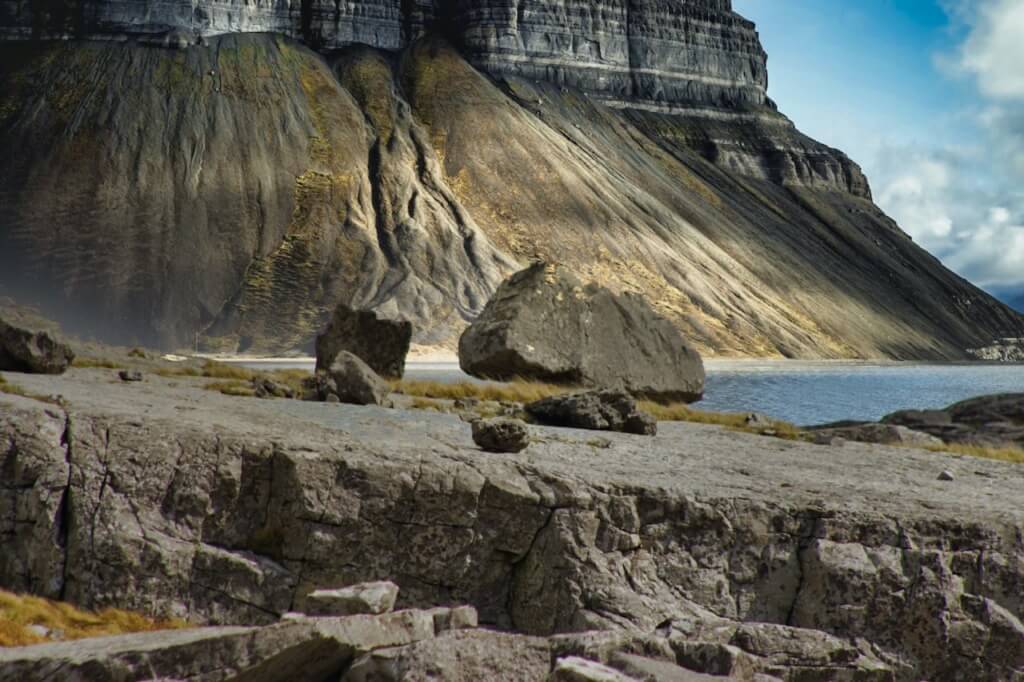
Another interesting geologic occurrence in the Tahoe area is glacial erratics. Rocks picked up from one location and brought to another by the transport of a glacier. Here in Cascade Canyon, you may find yourself eating a snack by the water falling over the granite down towards Cascade Lake.
Energized to explore, the trail above the waterfall becomes more difficult to distinguish because much of the lower canyon is granite, smoothed by glacier travel. Noticing striations upon the granite, you may take a step back and see a large boulder that may be a slightly different color or a different type of rock altogether.
Other than color or type, look for a rock that could be as large a VW Bug that just seems to be in a weird spot as if placed by some ancient race of giants engaging in rock-stacking games. This seemingly immovable stone was gently placed with the ease of a melting glacier.
Known to the geologic community as a glacial erratic, these boulders are common anywhere there is a history of glacial activity. Being more common further down glacial carved canyons, you may find glacial erratics throughout the lower elevations of the canyons around Lake Tahoe.
The glacial erratics in the lower section of Cascade Canyon likely came from higher up in the areas of Snow Lake, where the rock is often darker and known as granodiorite. Wherever a rock caught up in a glacier came from, one thing is certain, that once within the ice, the rock is on its journey downhill, down the canyon.
Traveling back to the height of the last ice age around 16,000 years ago, let’s take a closer look at Cascade Canyon. With our time-lapse sped up, we can see how fast a glacier moves, which turns out to be around 10 inches a day. If we watch carefully we can see a glacier act like a frozen river.
Just as its liquid counterpart, glaciers carve their channels and canyons by moving material from one place to another. Caught in the flow of the glacier, rocks large and small move down the canyon in the slow-moving turbulent of ice until the California sun beats down enough for the stone to be released from the icy grip.
A Lake From Ice
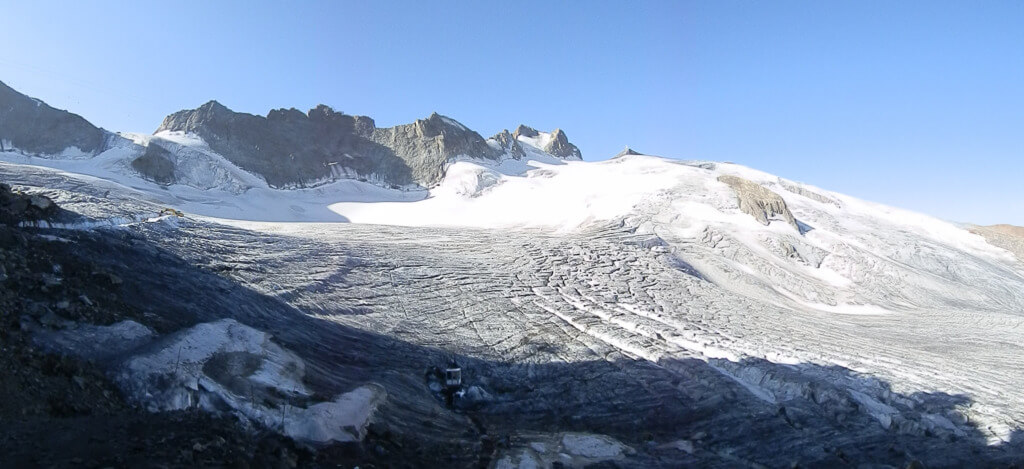
Here in the present day, if you are within what is known as the Lake Tahoe Basin or the watershed of Lake Tahoe, you likely don’t have to turn too far in any direction to catch a glimpse of the lake’s crystalline, azure water. The 39 trillion gallons estimated to be held in Lake Tahoe are, in fact, the same water that, in its frozen form, carved the canyons, etched striations, and left erratics strewn about.
During the past 3 million years, there have been at least four ice ages or periods of glaciation. Though tectonic uplift and subsidence is the driver of the basin’s formation, what we call the Lake Tahoe Basin has been carved and shaped by ice. Ironically, this basin carved by ice is also responsible for holding that ice during ice ages.
And when the Tahoe summers that we know and love came to the ice, the Tahoe Basin was there to hold the meltwater of the glaciers. Those glaciers, in turn, melted to become the beautiful Lake Tahoe that we see today.
About The Author
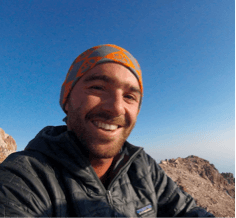
With a Bachelor’s degree in Environmental Science and Biology from UC Santa Cruz, Eliot Headley seeks to share and further understand the natural world through adventurous experience. He lives and works in Lake Tahoe, California as a tour guide.
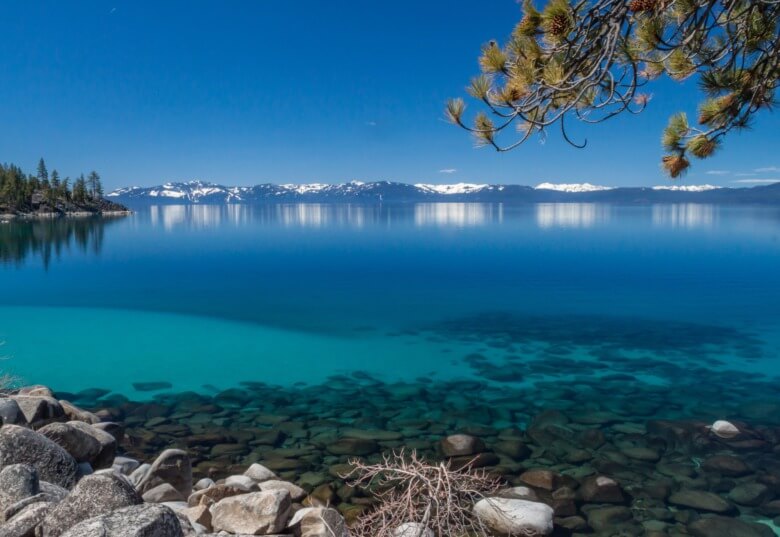
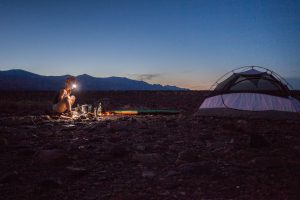
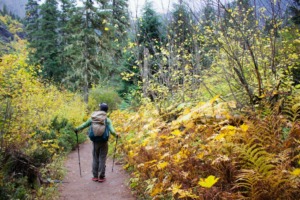

Comments
I heard of Lake Tahoe so many times but I actually never had the chance to visit it. Your guide made me put it on my priority list, though, and hopefully I’m going to visit it next year with my family. We are all big fan of mountains but we also love water – so what can be better than a lake situated close to the mountains, that allows us to enjoy fresh air and nature at its wildest? I saw you work as a guide there so I might contact you next year, we would love to have someone who knows the area so well as our guide! From what I can tell, it’s pretty cold out there, isn’t it? Since it’s a mountain region, I assume we should bring some thick clothes with out.
You ABSOLUTELY MUST visit Lake Tahoe H. Tracy! I always recommend folks to pack layers for a visit to Tahoe, although those layers definitely need to be a little thicker during the spring, fall, and winter months. Daytime temperatures during the summer can regularly rise above 80 degrees Fahrenheit, but nighttime temps can still drop into the high 30s in the summer. Hence, layers. If you’re looking for a guide, I highly recommend checking out Tahoe Adventure Company. They are one of the best guide companies in the Tahoe region and they are the guide company that I work for!
Such an interesting read. It is always a delight to read articles that portrays the formation of natural resources. Particularly, the formation of granite is simply mind blowing. To think that it even dates back up to 140 million years back makes it even further interesting and compelling. The Lake Tahoe certainly has an interesting story behind it and I hope to visit someday. Great post
Hi Leo! I think Eliot did an amazing job here telling the beautiful story of Lake Tahoe’s formation. But this is only the beginning. Please stay tuned for Part 2 of this geological masterpiece!
I want to thank the creative author of this article who wrote this beautiful article.
I think when anyone reads this article he Would be interested to see the place. I’m also very much interested to visit those places. A few days ago I just visited the “The Sierra Stone: Granite’. This is such a beautiful place.
After reading this article, here I have decided that I’ll go visit the other places mentioned in the article.
Thanks to the creative author who wrote that because it will help many peoples to know many things. From this, they can gain a lot of knowledge
We love to hear that you’ve recently visited the Tahoe area! And we hope you weren’t surprised by all the snow that just fell there. I hope you enjoy the powder, and please don’t hesitate to reach out if you’d like recommendations for trails or other recreation opportunities in Tahoe!